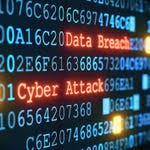Airport Cyber Safety Navigating Busy Travel Times Without Digital Turbulence.
With lots of anxious travelers, long lines, and a heightened sense of urgency, it’s easy to let our guard down when it comes to cyber security.
Recognizing this heightened risk, federal officials, including the Transportation Security Administration (TSA) and the Federal Communications Commission (FCC), are urging airline passengers to take extra precautions to protect their personal information while on the go. Their warnings are clear: caution is paramount, especially when interacting with public charging stations and Wi-Fi networks in airports.
So, how can you remain cyber safe amidst the chaos of a busy airport? Let’s break down the primary threats and the simple steps you can take to mitigate them.
The Digital Threats Lurking in Lounges
1. Public Wi-Fi: The Convenient Trap Airport Wi-Fi is a godsend for many, offering a chance to catch up on emails, stream entertainment, or simply browse while waiting for a flight. However, these networks are often unsecured or easily compromised, making them a prime target for cyber criminals.
- Eavesdropping: Without proper encryption, anything you do on an unsecure public Wi-Fi network – from checking email to online banking can potentially be intercepted by someone with malicious intent.
- Fake Hotspots (Evil Twins): Criminals can set up fraudulent Wi-Fi networks with names very similar to the legitimate airport network (e.g., “LAX_Free_Wi-Fi” instead of “LAX Official Wi-Fi”). Once you connect, they can monitor your activity, steal login credentials, or even inject malware onto your device.
- Malware Distribution: Unsecured networks can be used to push malicious software onto your device without your knowledge.
2. Public Charging Stations: More Than Just Power Those convenient USB charging ports found in airport terminals, gates, and lounges might seem harmless, but they pose a subtle yet significant threat known as “Juice Jacking.”
- What is Juice Jacking? Unlike standard AC power outlets, USB ports can transmit both power and data. In a juice jacking attack, a compromised charging station is rigged to either install malware onto your device or secretly download data from it when you plug in your phone or tablet. Imagine plugging in for a quick charge and unknowingly handing over your photos, contacts, or login information.
- Malware Injection: The charging port could inject viruses, spyware, or other malicious software that can compromise your device long after you’ve unplugged.
Your Cyber Safety Playbook: Practical Steps
Given these risks, here’s how to shield yourself effectively:
When it Comes to Wi-Fi:
- Avoid Sensitive Transactions: Never conduct banking, online shopping, or access sensitive work documents over public Wi-Fi, even if it seems secure.
- Use a Virtual Private Network (VPN): A VPN encrypts your internet connection, creating a secure “tunnel” for your data. This makes it incredibly difficult for anyone to snoop on your activities, even on an unsecure public network.
- Verify the Network Name: Always confirm the exact name of the official airport Wi-Fi network with airport staff or official signage. Be wary of networks with unusual names or those that don’t require a password.
- Disable Auto-Connect: Turn off your device’s auto-connect feature for Wi-Fi networks to prevent it from automatically joining unknown or compromised networks.
- Turn Off Sharing: Before connecting to public Wi-Fi, disable file sharing and AirDrop/Bluetooth sharing on your devices.
- Opt for Cellular Data: If you have a decent data plan, using your phone’s cellular data (4G/5G) or creating a personal hotspot with your phone is generally far more secure than using public Wi-Fi.
When it Comes to Charging:
- Stick to Wall Outlets (AC Power): Whenever possible, use your own charging brick plugged into a standard AC wall outlet. These outlets only provide power, eliminating the data transfer risk.
- Carry Your Own Portable Power Bank: A fully charged power bank is your best friend during travel. It ensures you have power on demand without relying on potentially compromised public stations.
- Use a USB Data Blocker (Juice Jack Defender): These small, inexpensive devices plug into the USB port of your charging cable and physically block the data pins, allowing only power to flow through. It’s a simple, effective shield against juice jacking.
- Choose Wisely: If a wall outlet isn’t available, prioritize charging at a reputable airport lounge or a secure, well-lit area rather than an isolated, unmonitored charging station.
- Keep Your Device Locked: Even if you must use a public USB port, ensure your phone or tablet is locked and doesn’t explicitly prompt you to “trust this computer” or allow data transfer. Deny any such requests.
General Cyber-Hygiene in Transit:
- Keep Devices Updated: Ensure your operating systems, apps, and antivirus software are always up to date. Software updates often include critical security patches.
- Strong Passwords and 2FA: Use strong, unique passwords for all your online accounts, and enable two-factor authentication (2FA) wherever possible.
- Be Aware of Shoulder Surfers: Keep an eye on who is around you when entering passwords or sensitive information.
- Secure Your Physical Devices: Don’t leave your devices unattended, even for a moment. Physical access often precedes digital compromise.
- Enable “Find My Device” Functions: For phones and laptops, enable features like “Find My iPhone” or “Find My Device” (Android/Windows) in case of theft or loss.
Navigating busy airports can be stressful enough without adding cybersecurity worries. By adopting a few simple precautions and being mindful of your digital interactions, you can greatly reduce your risk and ensure your personal information stays safe, allowing you to focus on the excitement of your journey.








